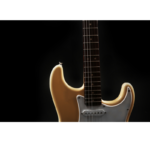Want to finally Discover the most intuitive way to master fretboard fluency with b minor guitar scales—one position, one phrase, one scale at a time.
If you’ve ever felt boxed in by scale patterns, or played a solo that felt more like a math problem than music… this is for you.
Today we’re diving into B minor guitar scales—how to play them, how to use them, and how to actually sound like a player, not just someone reciting dots on a fretboard.
💥 Want to master all 60 pentatonic positions across the guitar neck?
FretDeck: Pentatonic Scales is LIVE on Kickstarter.
👉 Back FretDeck Now »
🧠 Join our Guitar Freaks Hangout Discord. Share riffs. Get feedback. Level up.
👉 Join the Guitar Freaks Community »

❌ Stop Guessing. Start Shredding.
If you’re still fumbling through scale patterns and box shapes… it’s costing you progress.
FretDeck™ is the no-fluff system that shows you exactly how to master the fretboard—fast. Early access.
⚡️ This isn’t for dabblers. It’s for players who want results.
👉 Click here to join the pre-launch now
Early access. Limited rewards. Don’t wait.
🎵 The B Minor Scale: What It Is & Why It Matters
Let’s keep it simple.
The B minor scale is a natural minor scale built with the following notes:
B – C# – D – E – F# – G – A
Formula: 1 – 2 – ♭3 – 4 – 5 – ♭6 – ♭7
Step pattern: W – H – W – W – H – W – W
It’s the scale behind countless solos—from slow, soulful bends to high-gain shred.
But the real secret? Learning how to play it everywhere on the neck.
Need a refresher on minor scale theory? Check out this excellent explanation from JustinGuitar.
🎸 Start Here: B Minor Scale in Open Position
A great intro for new players—open strings mixed with fretted notes. It sounds raw, human, and real.
e|--------------------------0--2---
B|-------------------0--3----------
G|-------------0--2----------------
D|--------0--2---------------------
A|---0--2--------------------------
E|--------------------------
✅ Prompt: Play this slow. Hum each note. Let your ear guide your phrasing.
🔁 Next: B Minor Scale in 7th Position
This one feels like home base for lead guitarists.
e|--------------------------7--9--10---
B|--------------------7--9-------------
G|-----------------7--9----------------
D|------------7--9---------------------
A|---7--9--10--------------------------
E|---7--9--------------------------
✅ Prompt: Take one phrase. Play it slow. Then again with vibrato. Then slide into it.
Find the voice inside the notes.
🔥 B Minor Pentatonic Scale (5th Shape, 7th Position)
If the full minor scale is your vocabulary, the pentatonic is your poetry.
Simple. Bold. Soulful.
e|--------------------------7--10---
B|--------------------7--10---------
G|-----------------7--9-------------
D|------------7--9------------------
A|-------7--9-----------------------
E|---7--10--------------------------
✅ Prompt: Over a lo-fi B minor jam track, play just five notes. Focus on feel, not speed.
📦 Want all 60 shapes in one pocket-sized deck?
FretDeck: Pentatonic Scales has every key, every pattern—no app, no guesswork.
🎯 Grab it now on Kickstarter »
🎶 4 Real-World Ways to Use B Minor Guitar Scales
Let’s stop memorizing and start making music.
1. Craft Melodic Phrases
Skip the “play up and down the scale” drill. Think like a vocalist. Use silence. Repetition. Movement.
✅ Try This: Pick 3 notes from the B minor scale. Say something with them. Repeat with a new rhythm.
2. Improvise Over Real Progressions
Try this common B minor progression:
Bm – G – A – F#m
Target the chord tones (1st, 3rd, 5th) as landing spots. It’ll glue your lines to the harmony.
✅ Prompt: Solo using the 7th position scale shape. Let your phrases rise and fall with the chords.
3. Switch Between Positions
Stuck in one shape? Use transitions to unlock the full neck.
✅ Prompt: Start in open position, shift into 7th with a slide. Connect them with a bend or a repeating lick.
Bonus: This is where FretDeck shines—use two cards to build muscle memory between positions.
🎸 Grab the deck that teaches you how to move »
4. Use the Pentatonic for Soul, Then Add Color
The B minor pentatonic is safe. Start there. Then sprinkle in full minor scale notes for color (like the 2nd and ♭6).
✅ Prompt: Play a lick in pentatonic. Then replay it—this time add in one new note from the full scale. Listen to the tension.
🚀 Next Level Improvisation with B Minor
Once you’re fluent with the shapes, take things further:
🌀 Add Arpeggios
B minor arpeggio = B, D, F#
Use these to “outline” chords in a solo.
e|----------------7--10--
B|-------------7---------
G|----------7------------
D|-------9---------------
A|---9-------------------
E|-----------------------
✅ Prompt: End a phrase on an arpeggio note. Let it ring before moving on.
🔥 Use Chromatic Magic
Chromatic passing tones = flavor.
Example: D → D# → E (on G string, frets 7–8–9)
✅ Prompt: Slide into passing tones. Use them sparingly for tension and release.
🕰️ Rhythm = Power
Fast phrases get attention. Slow phrases win hearts.
✅ Prompt: Use a “call and response” phrasing trick.
Fast lick → pause → slow expressive bend. Repeat the motif in a new register.
✅ Recap: B Minor Guitar Scales Are Your New Secret Weapon
- Play the full B minor scale in open and 7th positions
- Master the pentatonic scale for phrasing and simplicity
- Connect shapes across the neck with slides, bends, and prompts
- Practice arpeggios, chromatic tones, and rhythm shifts
- Most importantly: make it sound like you
📦 Ready to Unlock the Whole Neck?
🎯 Back FretDeck on Kickstarter Today
- 60 pentatonic scale cards for all keys
- Built for visual learners and improvisers
- Includes positions, prompts, and practice hacks
- Trusted by hundreds of guitarists
- No screens. No confusion. Just progress.
👉 Click here to back FretDeck now »

❌ Stop Guessing. Start Shredding.
If you’re still fumbling through scale patterns and box shapes… it’s costing you progress.
FretDeck™ is the no-fluff system that shows you exactly how to master the fretboard—fast. Early access.
⚡️ This isn’t for dabblers. It’s for players who want results.
👉 Click here to join the pre-launch now
Early access. Limited rewards. Don’t wait.
🎸 Come Jam With Us
Join our private Discord for guitar freaks who actually practice.
- Weekly lick threads
- Feedback on solos
- Gear talk + practice challenges
- First access to giveaways and new decks
👉 Join the Guitar Freaks Hangout »

🎸 Join the Guitar Freaks Patreon!
Get SoloCraft E-Book FREE!
When you join Guitar Freaks on Patreon, you’ll instantly unlock my full e-book SoloCraft—your complete guide to fretboard mastery and building unforgettable solos. Think of it as your shortcut to playing with confidence and creativity.
👉 Don’t miss out—join now and grab your free copy!
Check out this guide: Visualizing Guitar Fretboard Notes










